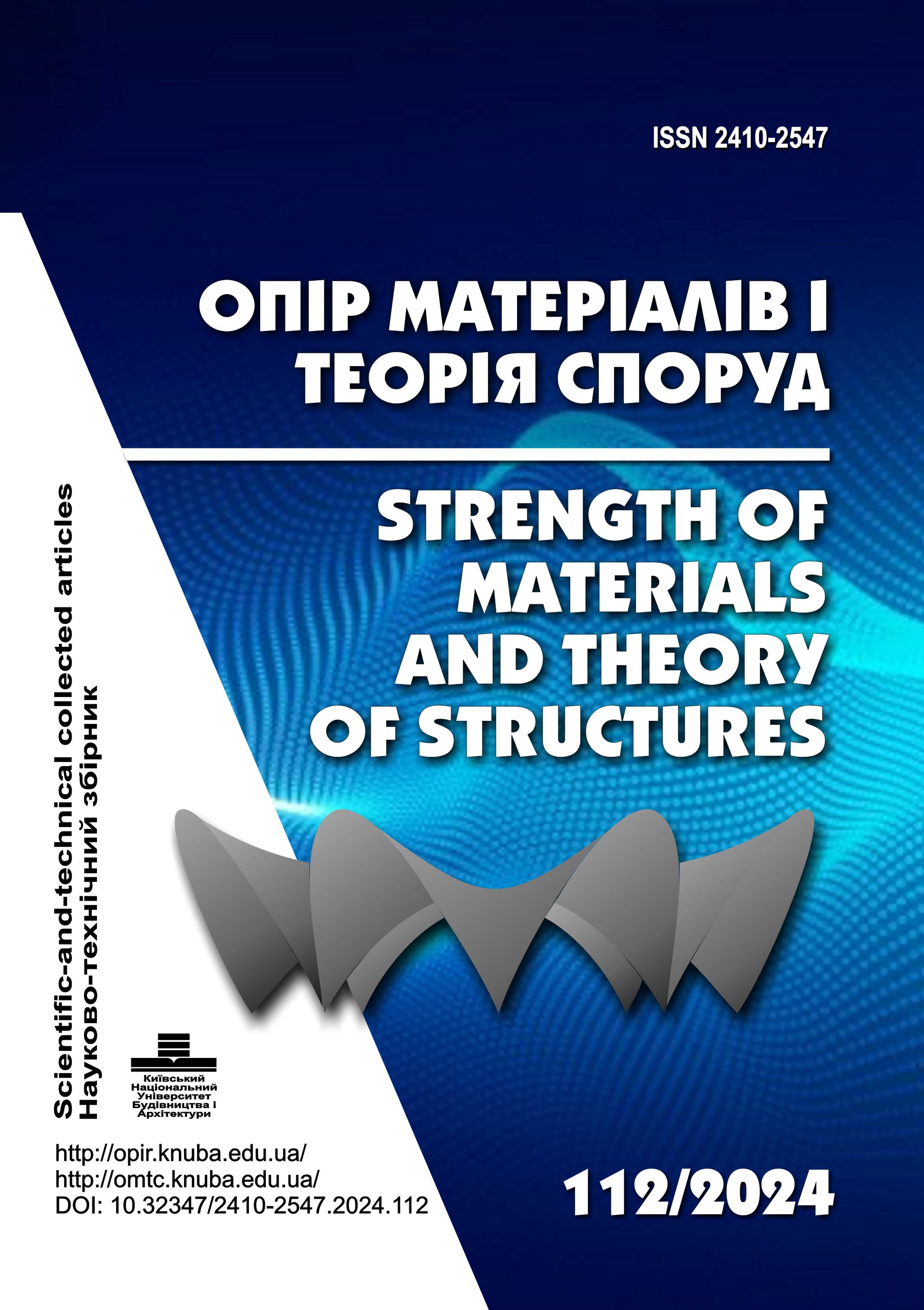Belt conveyor starting mode optimization
DOI:
https://doi.org/10.32347/2410-2547.2024.112.170-184Keywords:
dynamic model, motion mode, belt conveyor, drive mechanism, dynamic loadsAbstract
The work is aimed at increasing the efficiency of belt conveyors by choosing the drive mechanism movement mode.
During the operation of belt conveyors, significant energy and dynamic loads occur in the elements of the drive mechanism and traction body. The available loads significantly affect the energy losses and the reliability of the drive mechanism and the traction body. Energy and dynamic loads during transient processes (starting, braking, changing speed or performance and emergency stop) are especially dangerous. At this moment, high-frequency oscillations of both the traction body and the drive elements arise. With such fluctuations in the traction body (belt) of the conveyor, significant breaking forces arise, which create additional unwanted stresses in it and, as a result, contribute to premature destruction. In addition, the stator and rotor windings of the electric motor are heated, which accelerates their wear and failure.
In order to reduce dynamic loads, it is proposed to optimize the movement mode of the drive mechanism. For this purpose, the conveyor is presented in the form of a three-mass dynamic model, based on which a mathematical model was created. From the conducted dynamic analysis of the belt conveyor, it was established that during the start-up process, significant power and energy overloads occur in the elements of the drive and the traction body, which depend on the driving force of the drive. In addition, high-frequency oscillations of the tape are observed. Since the undesirable properties of the belt conveyor largely depend on the magnitude of the driving force of the drive, it should form the basis of the optimization criterion. In addition, the driving force of the drive must be reflected in the optimization criterion during the entire movement process, that is, the optimization criterion must be presented in an integral form. To eliminate the possible compensation of negative and positive values of the driving force on the conveyor, the latter should be represented in the integral criterion in quadratic form. Therefore, the rms value of the driving force of the drive during the start-up time was chosen as the criterion for optimizing the motion mode of the belt conveyor.
Optimization of the conveyor movement mode was carried out by minimizing the integral dynamic criterion. As a result of the optimization, the start-up mode of the belt conveyor was determined, which minimizes the effect of dynamic loads. This start-up mode makes it possible to increase the reliability of the conveyor and reduce the energy consumption of the drive.
References
L. Bittencourt, R. Immich, R. Sakellariou, N. Fonseca, E. Madeira, M. Curado, L. Villas, L. DaSilva, C. Lee, O. Rana, (2018). The internet of things, fog and cloud continuum: Integration and challenges. Internet of Things, 3-4, 134–155. https://doi.org/10.1016/j.iot.2018.09.005.
P. V. Boslovyak, G. A. Emelyanova, (2018). Optimization mathematical modeling of the weight of metal structure of suspended belt conveyor linear section. IFAC-PapersOnLine, 51(30), 616–619. https://doi.org/10.1016/j.ifacol.2018.11.223.
P. V. Boslovyak, A. V. Lagerev, (2019). Optimization of the conveyor transport cost. IFAC-PapersOnLine, 52(25), 397–402. https://doi.org/10.1016/j.ifacol.2019.12.569.
M. S. Cheremushkina, S. V. Baburin, (2017). Modelling and control algorithms of the cross conveyors line with multiengine variable speed drives. IOP Conference Series: Materials Science and Engineering, 177, 012060. https://doi.org/10.1088/1757-899x/177/1/012060.
M. S. Cheremushkina, D. A. Poddubniy, (2017). Reducing The Risk Of Fires In Conveyor Transport. IOP Conference Series: Earth and Environmental Science, 50, 012043. https://doi.org/10.1088/1755-1315/50/1/012043.
Y. Feng, M. Zhang, G. Li, G. Meng, (2019). Dynamic characteristic analysis and startup optimization design of an intermediate drive belt conveyor with non-uniform load. Science Progress, 103(1), 003685041988108. https://doi.org/10.1177/0036850419881089.
X .Guo, B. Liu, (2019). Research on Energy-Saving Optimization Control System of Mine Belt Conveyor. У 2019 International Conference on Robots & Intelligent System (ICRIS). IEEE. https://doi.org/10.1109/icris.2019.00021.
D. He, Y. Pang, G. Lodewijks, X. Liu, (2018). Healthy speed control of belt conveyors on conveying bulk materials. Powder Technology, 327, 408–419. https://doi.org/10.1016/j.powtec.2018.01.002.
J. D. Kelly, B. C. Menezes, (2019). Automating a shuttle-conveyor for multi-stockpile level control. У Computer Aided Chemical Engineering (с. 1153–1158). Elsevier. https://doi.org/10.1016/b978-0-12-818634-3.50193-4.
M. S. Kovalchuk, S. V. Baburin, (2018). Modelling and control system of multi motor conveyor. IOP Conference Series: Materials Science and Engineering, 327, 022065. https://doi.org/10.1088/1757-899x/327/2/022065.
I. O. Romanchev, (2019). The mathematical model of the belt conveyor. IOP Conference Series: Materials Science and Engineering, 560, 012035. https://doi.org/10.1088/1757-899x/560/1/012035.
Loveikin V.S., Romasevich Yu.O., Shymko L.S., Loveikin Yu.V., Pochka K.I. (2022). The dynamic analysis of the joint trolley movement and hoisting mechanism in the tower crane. Strength of Materials and Theory of Structure: Scientific and technical collected articles. Issue 108. P. 267-282. DOI: 10.32347/2410-2547.2022.108.267-282.
Loveikin V.S., Romasevych Yu.O., Loveikin A.V., Liashko A.P., Pochka K.I., Balaka M.M. (2022). Drive power minimization of outreach change mechanism of tower crane during steady-state slewing mode. Strength of Materials and Theory of Structure: Scientific and technical collected articles. Issue 109. P. 317-330. DOI: 10.32347/2410-2547.2022.109.317-330.
Loveikin V.S., Romasevich Yu.O., Spodoba O.O., Loveykin A.V., Pochka K.I. (2023).Optimization of the mode of movement of the boom system of the loader crane. Strength of Materials and Theory of Structures: Scientific-and-technical collected articles. Issue 111. P. 223-236. DOI: 10.32347/2410- 2547.2023.111.223-236.
Downloads
Published
Issue
Section
License

This work is licensed under a Creative Commons Attribution 4.0 International License.
Authors retain copyright and grant the journal right of first publication with the work simultaneously licensed under a Creative Commons Attribution License that allows others to share the work with an acknowledgement of the work's authorship and initial publication in this journal.

